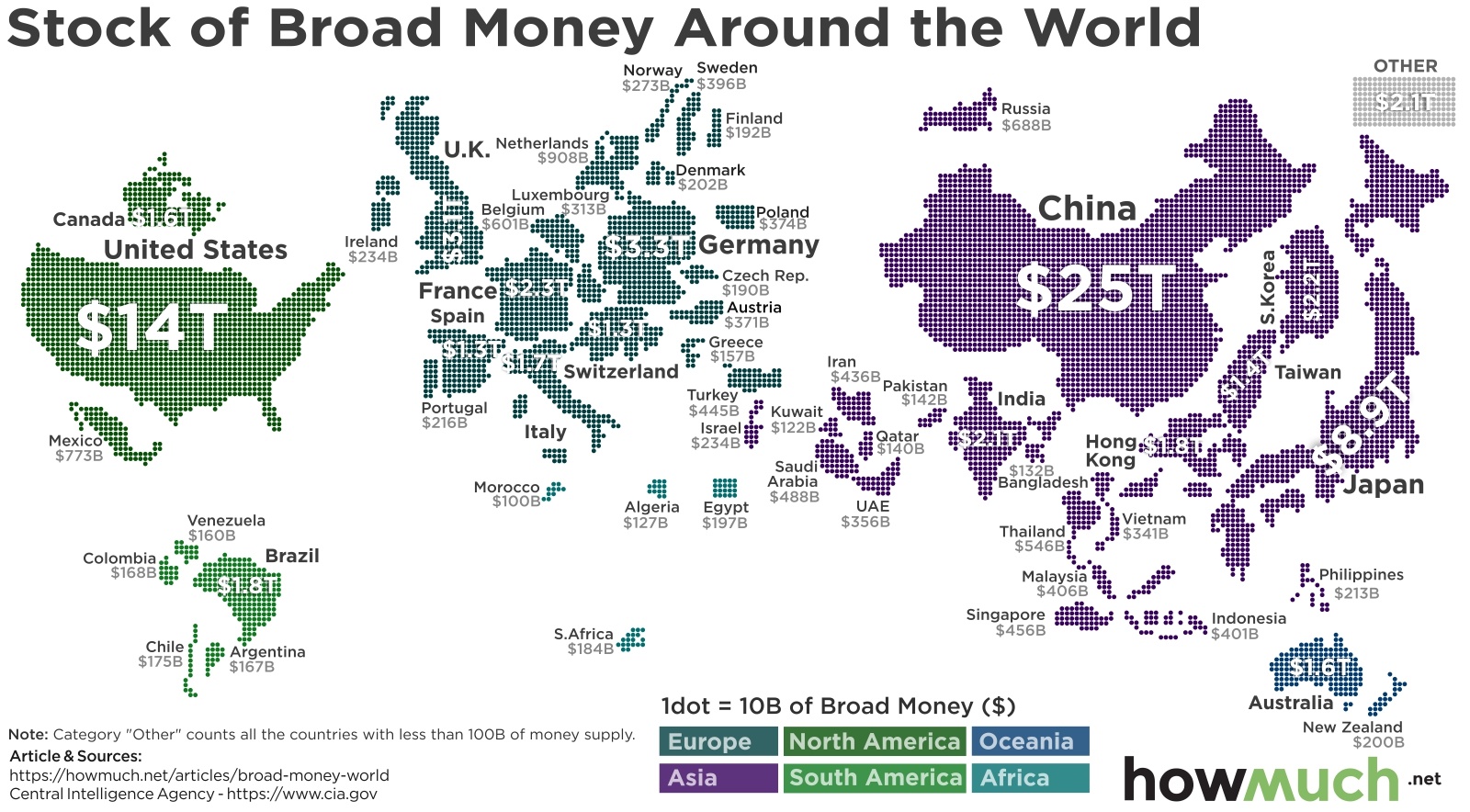How much money is in circulation around the world at any given time? And how would the money supply of each country compare against each other? Our latest map reveals the answers.

- China has the most money in circulation ($25T), beating out the U.S. ($14T).
- There are 327M Americans and 1.39B Chinese people. That means the U.S. actually has more money in circulation compared to China on a per capita basis.
- The European Union collectively has $8.1T in circulation, making it the fourth largest in the world, behind Japan ($8.9T).
- Countries in South America and Africa have very low supplies of money. Egypt has the most in circulation in all of Africa with only $197B.
Broad money refers to the amount of currency in circulation in a given economy. It includes paper money, funds in a bank account and basically any other financial instrument that you can use to make payments. We plotted the most recent estimates from the CIA’s World Factbook on a map, where one dot equals $10B of broad money. For the sake of simplicity, we grouped every country with less than $100B in a gray category for “other.” This lets you quickly and easily see which ones have the most loot in circulation.
Top 10 Countries With the Most Stock of Broad Money
1. China: $25T
2. U.S.: $14T
3. Japan: $8.9T
4. Germany: $3.3T
5. U.K.: $3.1T
6. France $2.3T
7. South Korea: $2.2T
8. India: $2.1T
9. Hong Kong: $1.8T
10. Brazil: $1.8T
There are a few notable takeaways from our visualization. For starters, China has the most money in circulation ($25T), nearly double the amount of the U.S. ($14T). This is notable only for the fact that the U.S. has by far the largest economy in the world with a GDP of $20.5T compared to $13.6T in China, according to the World Bank. Of course, China is home to roughly 1.39B people, whereas the U.S. has a population of 327M, also per World Bank figures. That means there are more than 4 times as many Chinese people as there are Americans, but the country only has twice as much currency floating around.
Europe stands out because there are several nations with over $1T in circulation, including Germany ($3.3T), the U.K. ($3.1T) and France($2.3T). In fact, the European Union boasts $8.1T in total stock of board money, making the EU the fourth largest in the world behind Japan ($8.9T). Of course, that figure includes the U.K., whose EU membership is still undetermined.
Note how Africa is almost entirely missing from our map. Egypt has the largest supply of money in Africa at only $197B. Brazil is the only country in South America topping $1T. We grouped any country with less than $100B in supply together in the “other” category in the top right, leaving lots of the Southern Hemisphere blank.
Regardless of how much money any individual country has in circulation, the U.S. dollar remains the reserve currency of choice around the world. This gives the U.S. a lot of advantages on the global stage. For example, the price of oil is priced in USD. The $14T in U.S. money supply therefore only represents one small part of how critically important the U.S. economy is to the rest of the world.
What do you think is the most important takeaway from our map? Let us know in the comments.
Data: Table 1.1
About the article
Authors
Irena - Editor





